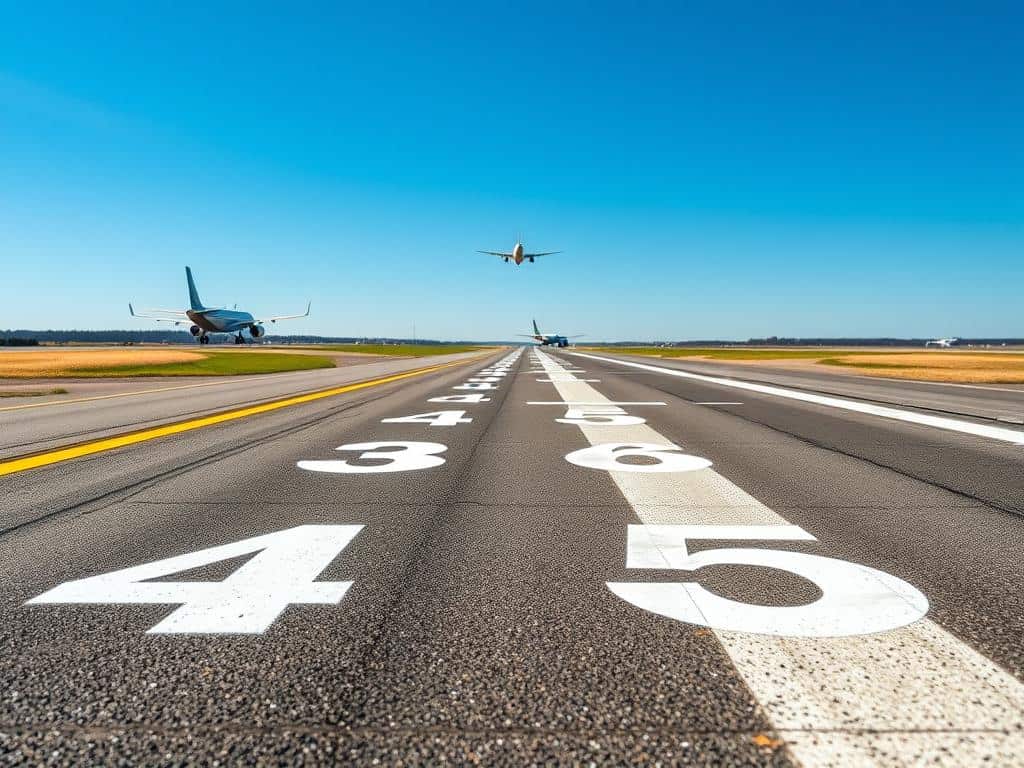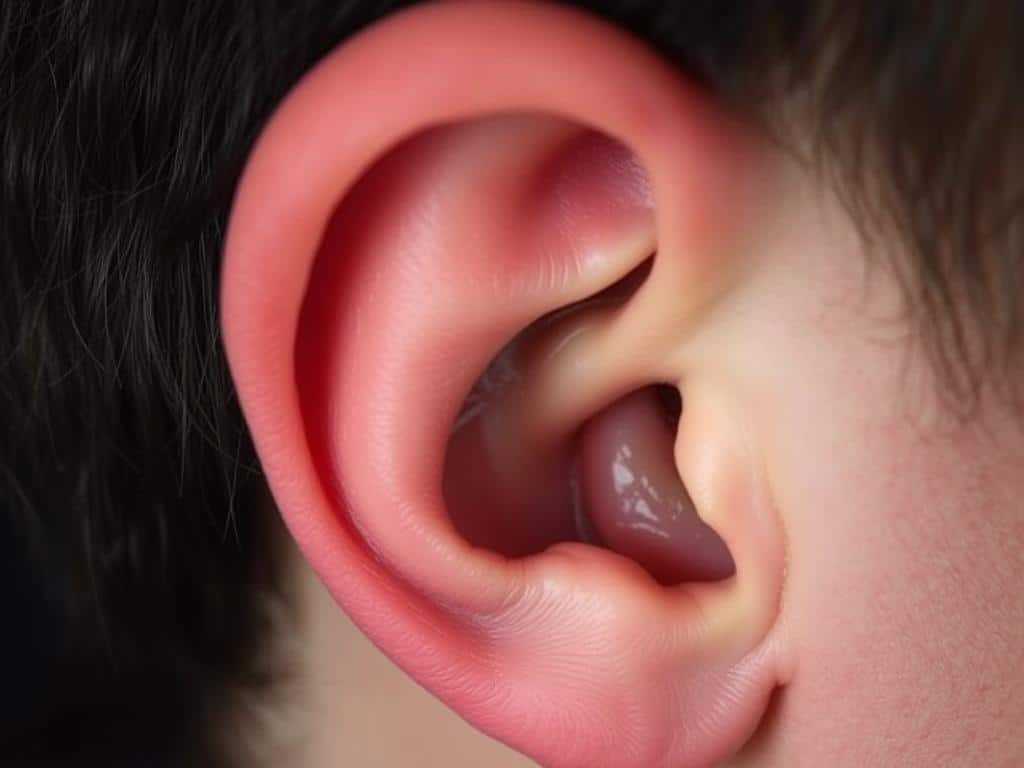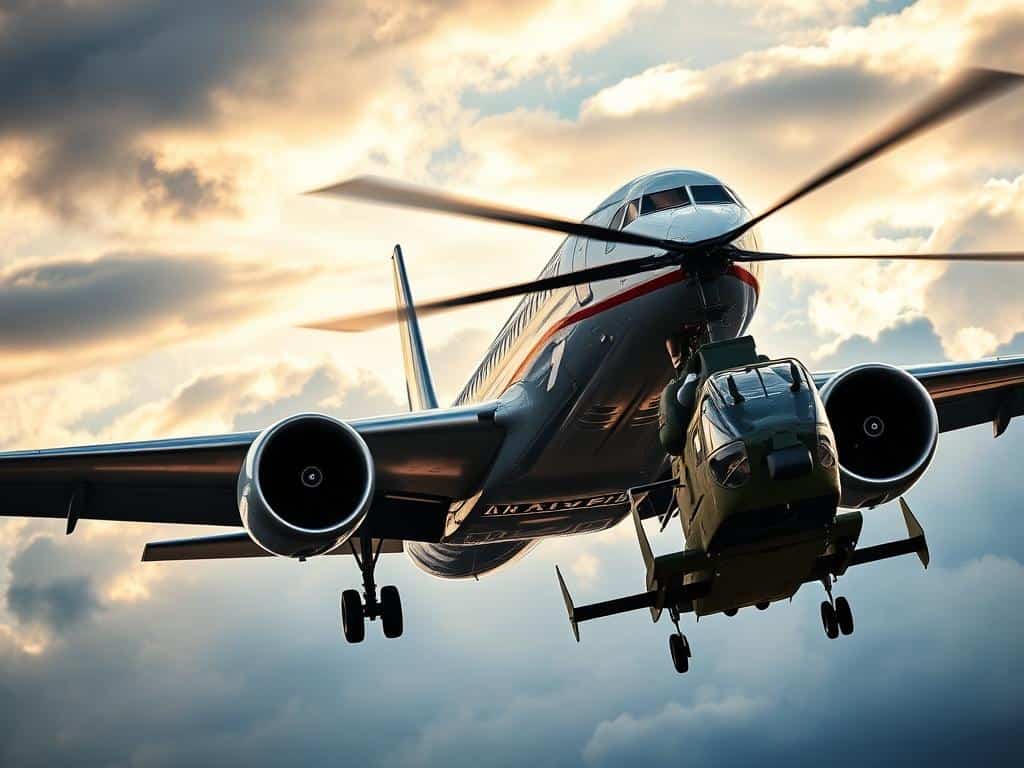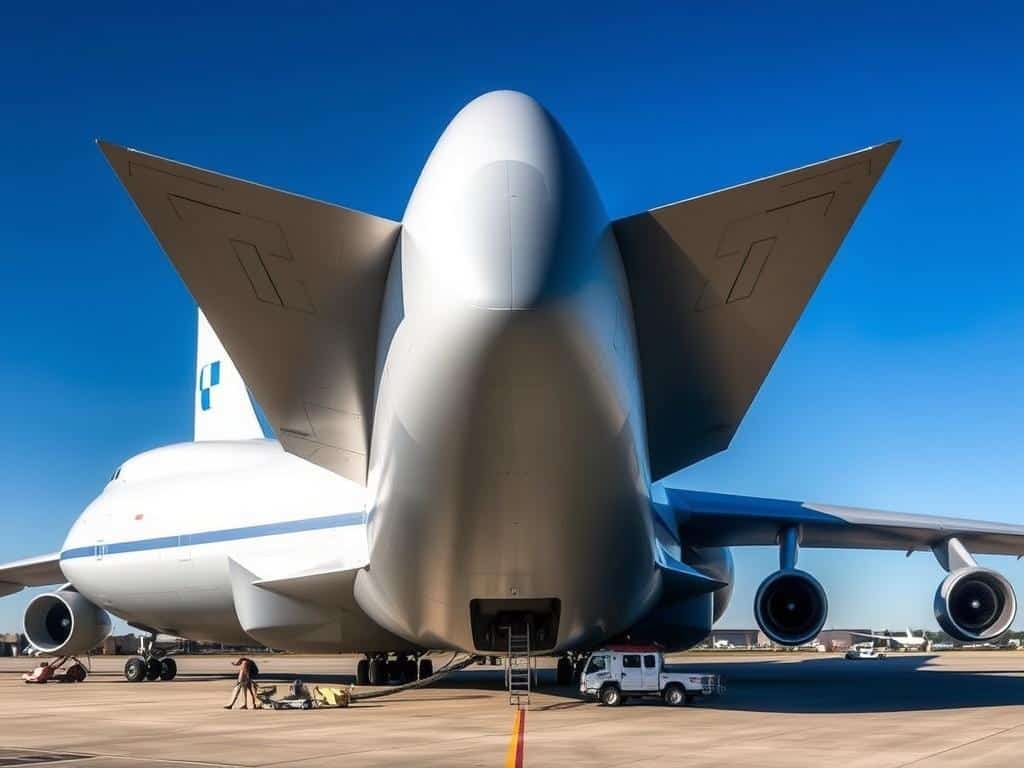Standing at the runway’s edge, I watched jets soar into the sky. I thought about the complex system that makes flying possible. Runway numbers are more than just labels; they’re key to aviation navigation. Each number points to a specific direction, giving pilots vital info during takeoff and landing.
In aviation, every detail is important. Knowing about runway numbers can make a big difference. This guide will explain the meaning, assignment, and importance of runway numbers. It’s all about appreciating the art of flying.
Key Takeaways
- Runway numbers reference the nearest 10-degree magnetic heading, rounded to the nearest ten degrees.
- Runways with parallel layouts have unique identifiers using letters to differentiate them.
- The first zero in runway numbers is often omitted in the U.S., which aids in clarity.
- Runway markings on pavements are key for pilot navigation, featuring white and yellow paint.
- Regular updates to charts are mandatory to reflect accurate and current runway numbers.
Understanding Runway Numbers
For pilots and aviation fans, knowing about runway numbers is key. These numbers tell us about the runway’s direction in relation to the Earth’s magnetic field. They show the magnetic heading of a runway.
What Are Runway Numbers?
Runway numbers show a runway’s magnetic direction, rounded to the nearest ten degrees. They range from 1 to 36, based on compass bearings. For example, a runway at a 280-degree magnetic heading is called Runway 28.
Each runway has a number at both ends. The numbers at opposite ends are the reciprocals of each other. This means if one end is 1, the other is 19. This is important for understanding the direction of runways in airport design.
How Are Runway Numbers Assigned?
A runway’s number is based on its magnetic heading. Pilots and air traffic controllers need these numbers for navigation. For instance, a 342-degree magnetic heading makes the runway Runway 34 after rounding.
When airports move due to changes in magnetic north, they might repaint or rename runways. This is to keep them aligned with the headings. The FAA regularly checks to make sure these numbers are correct.
Why Magnetic Heading Matters
Magnetic heading is critical for safe takeoffs and landings. Accurate runways help pilots navigate, even in bad weather. At airports like Atlanta’s Hartsfield-Jackson, the direction of parallel runways is shifted by 10 degrees.
This helps pilots avoid confusion. Magnetic heading ensures pilots can align their planes correctly. This improves efficiency and keeps everyone safe in busy skies.
Factors Influencing Runway Orientation
Several key factors shape the direction of runways at airports. Wind trends are a major consideration. Airports try to align runways so planes can take off and land safely into the wind.
Predominant Wind Trends
Wind trends are vital in choosing runway directions. Airports use past wind data to reduce risks from crosswinds and tailwinds. For example, at big airports like Atlanta (ATL) and John F. Kennedy (JFK), wind direction is key in picking runway directions.
This knowledge helps predict runway configurations with high accuracy. It can reach up to 85% when wind data is used well.
Terrain and Topography
The area around an airport also affects runway direction. Terrain and topography can limit where runways can go while keeping safety in mind. For example, in hilly or mountainous areas, runways might need to be aligned differently.
Adjusting to these geographical challenges helps ensure safer flights. It meets the special needs of local flight paths.
Noise Abatement and Local Infrastructure
Noise reduction is another important factor in runway design. Airports work hard to lessen noise effects on nearby communities. This requires careful planning of flight paths and runway directions.
The buildings and homes around an airport also shape runway designs. Airports aim for efficiency while protecting the quality of life for nearby residents.
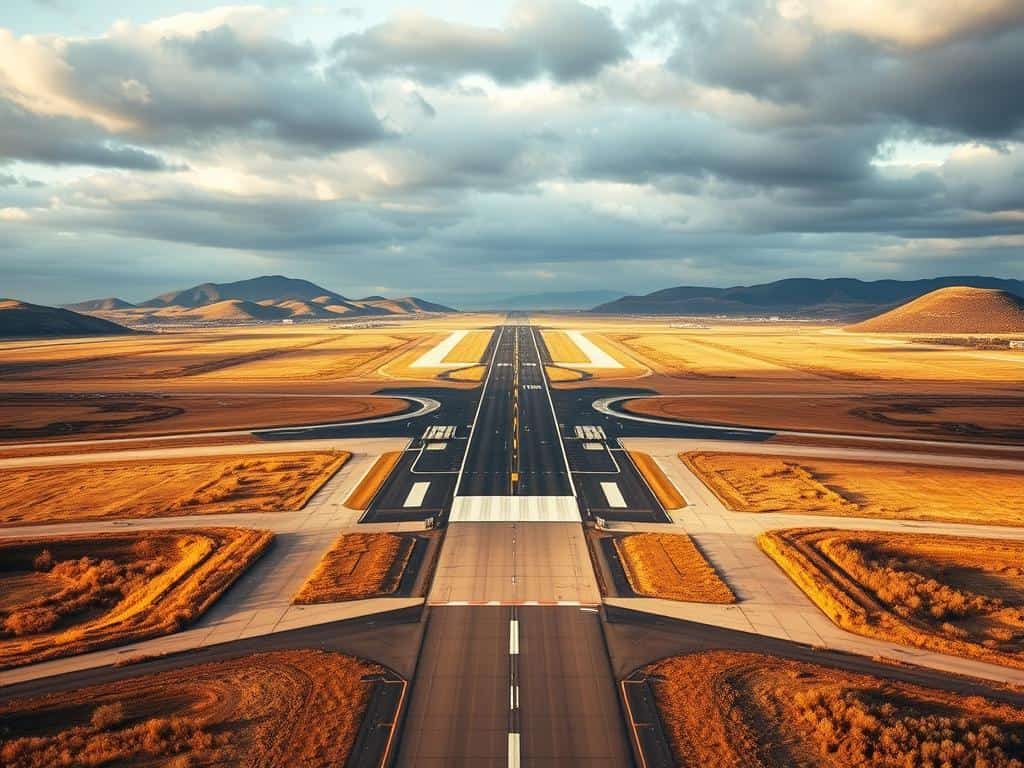
Conclusion
Exploring aviation navigation, I see how runway numbers are key to safety and efficiency. These numbers guide pilots during takeoff and landing. They help me navigate better in different flying environments.
Runway numbers are more than just labels. They show the importance of understanding aviation navigation. Knowing about magnetic field changes and environmental factors helps me see how they affect runway directions. For example, a 5-degree shift can change a runway’s number, showing the detailed work in this field.
As a pilot, staying updated on runway numbers and airport changes is vital. This knowledge helps me and other pilots. Runway numbers are the base for safe flying. It’s important to stay informed to keep flying safe and efficient.
